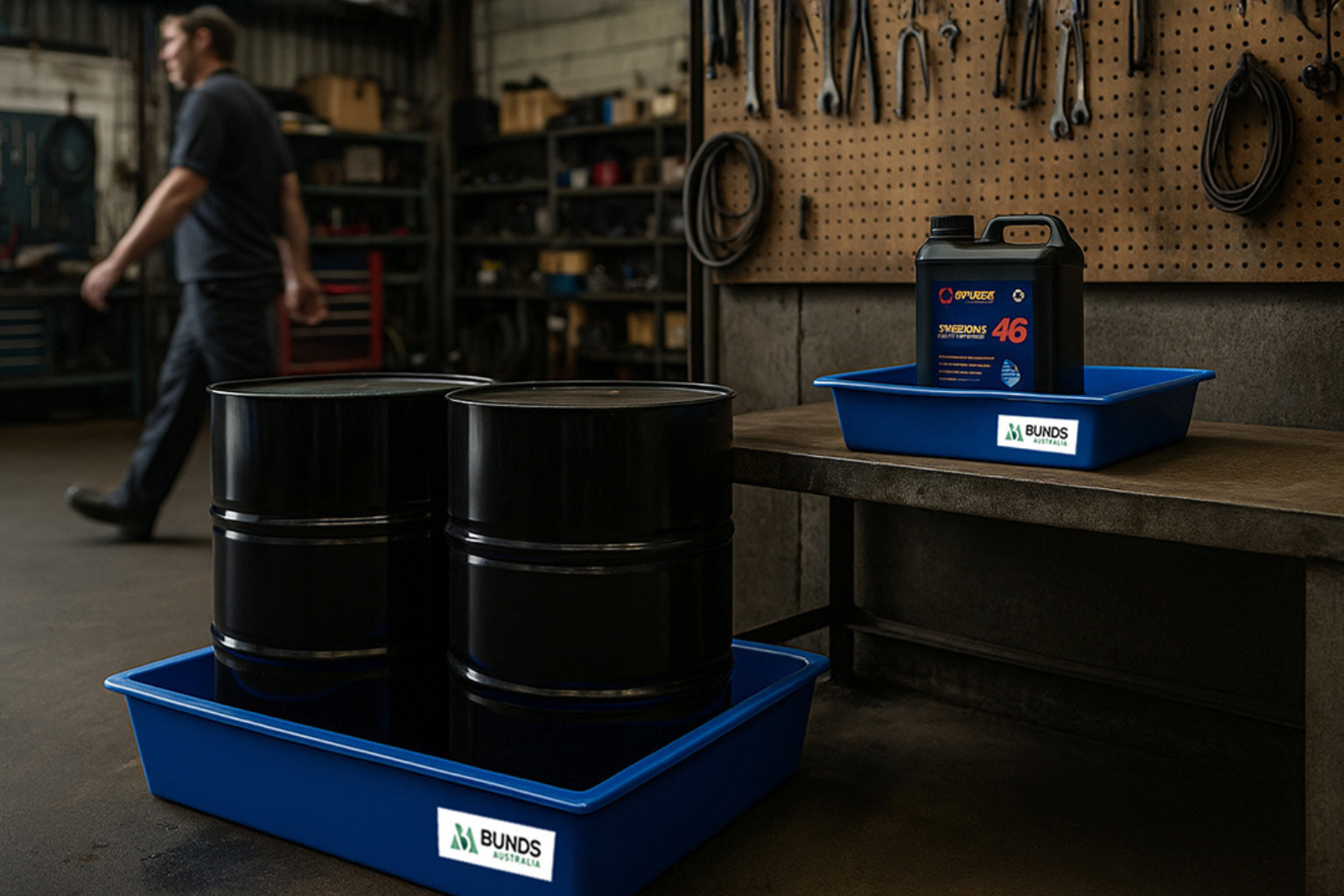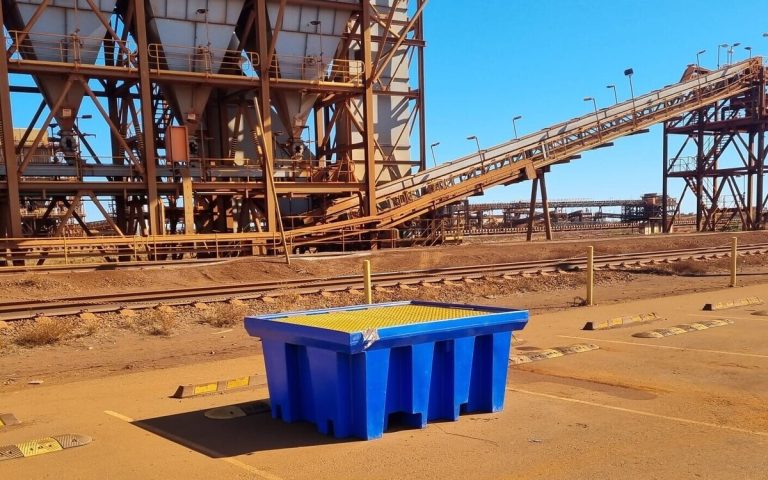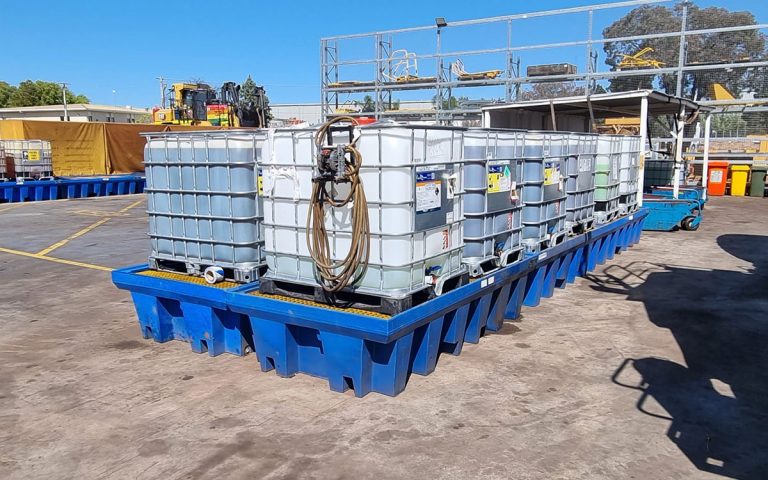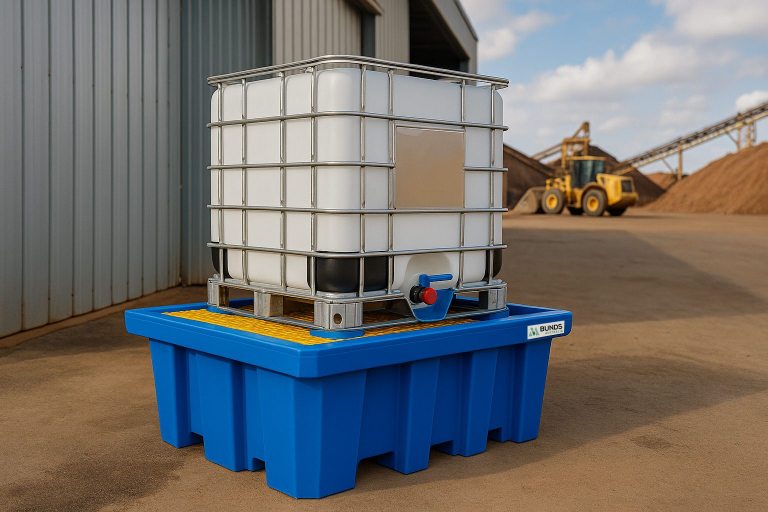Bunding in the Automotive Industry: What Every Workshop Must Know in 2025
Whether you’re running a small garage, managing a fleet servicing depot, or operating a multi-bay workshop – if you’re storing oil, fuel, or coolant, bunding isn’t just helpful… it’s required.
Spills happen. But the consequences? They’re not always as visible as a wet patch on the floor. In 2025, stricter regulations, higher penalties, and rising clean-up costs mean every automotive business should know the basics of bunding—and what options actually suit a real-life workshop.
Let’s break it down.
What Is Bunding—and Why Does It Matter?
Bunding is the process of using a physical barrier or tray to contain liquid in case of a spill or leak. In an automotive setting, that usually means:
- Drums of oil or coolant sitting on bunded pallets
- Drip trays under jugs or bench-top containers
- Floor bunding outlining your service bay
- Or mobile drum dollies that catch leaks while you move them
Here’s why it matters:
- Safety – Spills increase the risk of slips, burns, and injuries
- Compliance – It’s a requirement under WHS and EPA standards
- Clean-up – Containment means faster clean-ups and less downtime
- Fines & Liability – Non-compliant storage can cost thousands in penalties
Put simply: if it’s storing, it should be bunded.
What’s Changing in 2025?
Workshops are under more scrutiny than ever.
The push for sustainable operations has led to tougher enforcement of spill control laws, especially for businesses near residential areas or waterways.
Regulators are no longer just targeting large industrial sites—small-to-mid-sized auto workshops are now firmly in the spotlight.
Inspections often focus on:
- How and where oils are stored
- Whether your site has bunds or trays under every potential spill point
- If spill kits and clean-up supplies are accessible
It’s no longer a “nice to have.” It’s a must-have.
What Types of Bunding Does an Auto Workshop Actually Need?
Not every workshop needs the same setup. But most will use a mix of these:
- IBC & Drum Bunded Pallets
For bulk liquid storage—think oils, fuel or AdBlue.These are heavy-duty pallets designed to hold an entire IBC or drum plus its potential spill volume.
Ideal for:
- Storage areas
- Back-of-house
- Service centres with larger volumes
- Drip Trays & Bunded Shelving
You know those slow leaks that come from taps or half-used jugs? This is where drip trays shine.They catch the mess before it hits your floor.
Ideal for:
- Bench tops
- Under dispensing taps
- Small containers or parts washers
- Mobile Drum Dollies
You’re rolling a drum across the floor, and it leaks halfway.Now there’s a trail from bay to bay.
Ideal for:
- Busy workshops
- Fleet servicing
- Anywhere 205L drums need to move
- Floor Bunding & Barrier Systems
Create a designated, contained workspace.Floor bunding installs around service bays to stop liquids from spreading into walkways or work zones.
It’s low profile, drive-over rated, and easy to install.
- Portable Wash Mats & Collapsible Bunds
Doing work off-site? Or in an area without permanent drainage?These portable options are perfect for:
- Mobile mechanics
- Detailers
- Temporary clean-up zones
How Bunds Australia Helps Workshops Stay Compliant—Without the Drama
Let’s be honest: most workshops don’t have time to research regulations, compare bund heights, or scroll endless product pages.
That’s where Bunds Australia comes in.
- Australian-made bunding
- Designed for the way real workshops operate
- Best price guarantee
- Fast, nationwide delivery
And if you’re not sure what you need?
Call the team. No pushy sales—just the right setup for your space.
Wrapping Up: What You Should Do Next
If you store or use liquids in your workshop, you need to think about bunding in 2025.
Start simple:
- Identify where your liquids are stored
- Check what’s underneath them (or not…)
- Look at how liquids move around your site
Then get the gear that stops the mess before it starts.
Need a hand?
Call 1300 222 862 or head to bundsaustralia.com.au to see solutions built for Aussie workshops.









